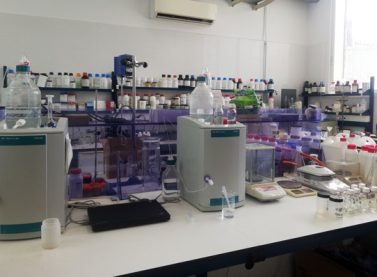WHY CONDUCT A FRONT-END ENGINEERING DESIGN STUDY?
A Front-End Engineering Design (FEED) study provides a clear and accurate assessment of the technical, environmental, and economic feasibility of a wastewater treatment plant, minimizing risks and ensuring long-term project success.
BENEFITS OF CONDUCTING A FEED STUDY:
- Early risk identification: Identifies potential technical, environmental, and operational challenges early in the process, preventing costly design modifications, or failures during the construction and operational phases.
- Optimized Resource Allocation: Ensures that CAPEX and OPEX are accurately estimated, preventing budget overruns. Efficient resource planning by specifying equipment, materials, and infrastructure needs in advance.
- Accelerated Project Execution: Provides clear and detailed specifications for the purchase of materials and equipment, as well as for plant construction, preventing delays and uncertainty.
- Solid foundation for decision-making: Provides a clear technical and economic analysis, allowing stakeholders to make informed decisions before committing to full-scale investment.
- Guaranteed regulatory compliance: Ensures that the project meets environmental regulations and industry standards before execution.
- Greater operational efficiency and reliability: Helps select the most suitable treatment technologies and operational strategies, improving system longevity and performance, while reducing energy consumption, waste generation, and maintenance costs.
- Enhanced Supplier and Contractor Coordination: Enables better coordination between all the parts involved by defining project scope, specifications, and performance expectations.
 |
 |
HOW IS A FRONT-END ENGINEERING DESIGN STUDY CARRIED OUT?
STEP 1: LAB TESTING AND CONCEPTUAL DESIGN
- Laboratory testing
- Determination of concentration limits
- Determination of the quality of recovered water
- Confirmation of equipment construction materials
- Verification of equipment treatment capacity
- Study of available wastewater treatment technologies
- Conceptual design of the treatment plant
STEP 2: TECHNICAL AND ECONOMIC FEASIBILITY STUDY
- Technical and economic feasibility of the treatment plant
- Percentage of water recovered and concentrated waste to be managed
- Evaluation of water reuse within the process (Zero Liquid Discharge)
- Assessment of waste valorization potential, if applicable
- Financial analysis and Return On Investment (ROI), if applicable
STEP 3: DEVELOPMENT OF THE CONCEPTUAL ENGINEERING STUDY
- Preliminary engineering development based on lab test conclusions:
- Technical specifications of main equipment
- Definition of project scope
- Cost estimation
- Technical meeting with Condorchem’s engineering team
ENGINEERING TO ENSURE YOUR PROJECT’S SUCCESS FROM DAY ONE
A FEED study offers a clear, well-founded roadmap for the design and implementation of your effluent or liquid waste treatment plant, ensuring that every decision is backed by reliable data, technical expertise, and solid projections.